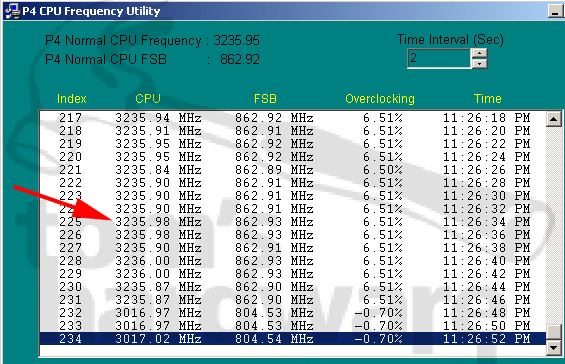MSI Admits to FSB Overclocking
Confession: MSI Raises The FSB With Applications
Yesterday, when introducing the Intel 865 chipset (see the article Intel Rigs Up: P4 Series with FSB800 , THG reported on MSI's dynamic overclocking.
Never seen before: clever overlocking with MSI's 865 Neo 2 while applications are being run.
The lab engineers made a curious discovery when taking a closer look at the 865 Neo 2 from MSI: the manufacturer had integrated an ingenious logic that increased the FSB clock from 6% to 8% when programs were run, which automatically led to overclocking the processor. The trick: with conventional tools, such as the popular WCPUID, Intel CPU Frequency Display, CPUZ and SiSoft Sandra 2003, the clock increase cannot be detected. Only a special tool was able to reveal the raised clock speed.
Official Statement From MSI Taiwan
| "To the Editors of Tom' s Hardware,We are writing in response to your article "Intel Rigs Up: P4 Series with FSB800"Indeed what your lab engineer discovered is true.MSI does plan to use the said "logic circuit" or "dynamic overclocking" as a feature for this board.The reason why we haven't announced it to anybody yet is because we are in the process of doing internal testing and applying for a patent.This feature should be available for high-end MSI motherboard in our next BIOS release.MSI's "dynamic overclocking" (the feature name still has not been finalized as of this writing) feature is exactly what your article described."The manufacturer has incorporated an ingenious logic circuit that increases the FSB speed between 6 and 8 percent while programs are running; the processor is automatically overclocked. However, FSB and CPU speeds are only increased when applications are started or when benchmark programs have finished - subject to CPU usage reaching close to 100 percent. And this is really interesting: the overclocking does not show up using conventional benchmarking utilities such as WCPUID, Intel CPU Frequency Display, CPUZ or SiSoft Sandra 2003. You need a very specialized tool to reveal the increased bus speed."The reason why the overclocking does not show up on well-known utilities such as WCPUID, Intel Frequency Display, CPUZ and SiSoft Sandra 2003 is because these programs cannot detect dynamic overclocking. That is why you need a special developer's tool to detect dynamic overclocking in realtime.We are also planning to incorporate this feature on MSI boards in the future as well, and we will offer an option to activate and deactivate this feature on these boards.Once again, thanks for everything!!!Best Regards,MSI Marketing" |
If you would like to check your own frequency, download thg_clock.exe .
Conclusion: MSI 865 Neo 2 And MSI 875 Neo Not Within Intel Specification
Get Tom's Hardware's best news and in-depth reviews, straight to your inbox.
Yesterday, the THG lab engineers made a curious discovery while they were testing the new 865PE board from MSI. The manufacturer had succeeded in overclocking the board while in operation, with the help of a special logic. This caused the processor to run faster without being detected by standard tools (WCPUID, Intel Frequency Display, CPUZ, SiSoft Sandra 2003). However, the FSB and CPU clock speeds are only raised when applications or benchmark programs are run - depending on if the CPU load is close to 100%. Meanwhile, we were able to verify this on the 875P/Canterwood plattform from MSI as well. Further skepticism was aroused by the fact that the 865 Neo 2 board from MSI has a relatively low memory performance compared to the other candidates in the test field, and yet, in tests such as 3D Mark 2001/2003, it attained record scores.
In the end, this was only made possible in that the board overclocked the 3 GHz process to over 3.2 GHz during operation due to the special logic. After a benchmark was run, the FSB switched back to 200 MHz - the CPU ran with 3 GHz once more. Clever work, but ultimately, our development tool was able to reveal this ingenious trick.
One thing for sure: because some boards in the first production phase are equipped with this overclocking technology, which cannot be deactivated, a 3 GHz CPU, for example, runs with more than 3200 MHz. If the processor were to be damaged, then Intel does not make good on any guarantees, so actually, MSI should make up for the loss instead. In addition, the user is not informed about this feature and its consequences before or during the purchase. And there's no note about it in the user manual or on the manufacturer's website either.
MSI's actual goal, however, is unmistakable: because the layout of the motherboard, or the firmware of the BIOS, does not offer any potential for higher performance, the manufacturer chose to use the method of secretly raising the clock speed, and many editors around the world failed to notice it. Congratulations!
